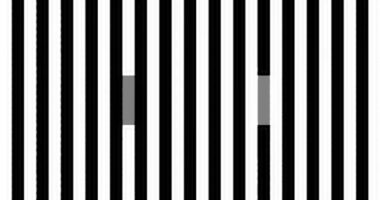ARCHAEOLOGISTS have unearthed the ancient remains of a baby near the site of Stonehenge.
Bronze Age graves, Neolithic pottery and even a mysterious C-shaped enclosure where prehistoric Brits may have crafted metal or leather were also uncovered near the Wiltshire monument.
Researchers made the finds during preliminary work on the site of a proposed new road tunnel underneath Stonehenge, the Guardian reports.
One of the most interesting artefacts discovered by the team at Wessex Archaeology is a shale object that could have once formed part of a club.
It’s thought to be around 4,000 years old. The final resting place of a baby was found nearby, buried alongside a small beaker.
“We’ve found a lot – evidence about the people who lived in this landscape over millennia, traces of people’s everyday lives and deaths, intimate things,” Wessex Archaeology‘s Matt Leivers said.
“Every detail lets us work out what was happening in that landscape before during and after the building of Stonehenge. Every piece brings that picture into a little more focus.”
Controversial plans to lay down a two-mile long tunnel underneath the ancient monument have suffered years of delays.
The busy A303 road, which passes the henge, is being moved into a underground 1.8-mile dual-carriageway called the Stonehenge Tunnel.
The £2billion project was designed to remove unsightly and noisy traffic from the landscape around the monument, and improve safety.
Historic England, the National Trust and English Heritage have said it would “restore peace and tranquillity” to the site “if designed with care”.
However, critics argue that the work will cause irreparable damage to thousands of undiscovered artefacts buried around the tourist attraction.
Ahead of construction – due to be completed in 2029 – archaeologists are surveying the area to uncover relics that may be destroyed by the works.
The C-shaped enclosure found by the team is surrounded by ditches that contain burnt flint.
That’s led to speculation that it was once used as an industrial site to craft materials such as metal or leather, or to make pottery.
“It is a strange pattern of ditches,” said Leivers.
“It’s difficult to say what it was, but we know how old it is because we found a near-complete bronze age pot in one of the ditches.”
Just south of the site’s visitor centre, Neolithic grooved pottery was found.
It’s thought that the pottery may have been left there by those who built the circle or visited it.
During their preliminary work, Wessex Archaeology, working with Highways England, has dug 1,800 test pits and 400 trial trenches.
The group say they are working on the project systematically and sensitively.
Further excavations are due to begin later this year. Construction on the tunnel is due to start in 2023.
What is Stonehenge?
What you need to know about Britain’s most mysterious monument…
- Stonehenge is a prehistoric monument in Wiltshire
- It’s a ring of standing stones that measures up to 30 feet tall and is seven feet wide
- Each stone weighs roughly 25 tons
- Experts say that the monument was constructed between 3000 and 2000 BC
- In 1882, it was legally protected as a Scheduled Ancient Monument
- And in 1986, the site and surroundings became a UNESCO World Heritage Site
- Stonehenge itself is owned by the Crown and managed by English Heritage
- But the land around Stonehenge is owned by the National Trust
- Part of what makes Stonehenge so mysterious is that it was produced by a culture with no written records
- Scientists regularly debate over how and why Stonehenge was built, and what it was used for
- One theory suggests Stonehenge was a sacred burial site
- Another proposes that it was used for celestial and astronomical alignments
- And some think it was an ancient place of healing
- It used to be believed that it was created as a Druid temple
- But we now know that Stonehenge predated the Druids by around 2000 years
In other news, a rare photo has shown that Stonehenge was built like Lego using carved studs and holes.
The mystery over who built Stonehenge may finally have been solved after experts uncovered “Britain’s first city” a mile away.
And, the face of a 1,000-year-old Viking warrior woman with a gruesome battle wound across her skull has been revealed.
What do you make of the Stonehenge find? Let us know in the comments!
We pay for your stories! Do you have a story for The Sun Online Tech & Science team? Email us at [email protected]
This post first appeared on Thesun.co.uk



















